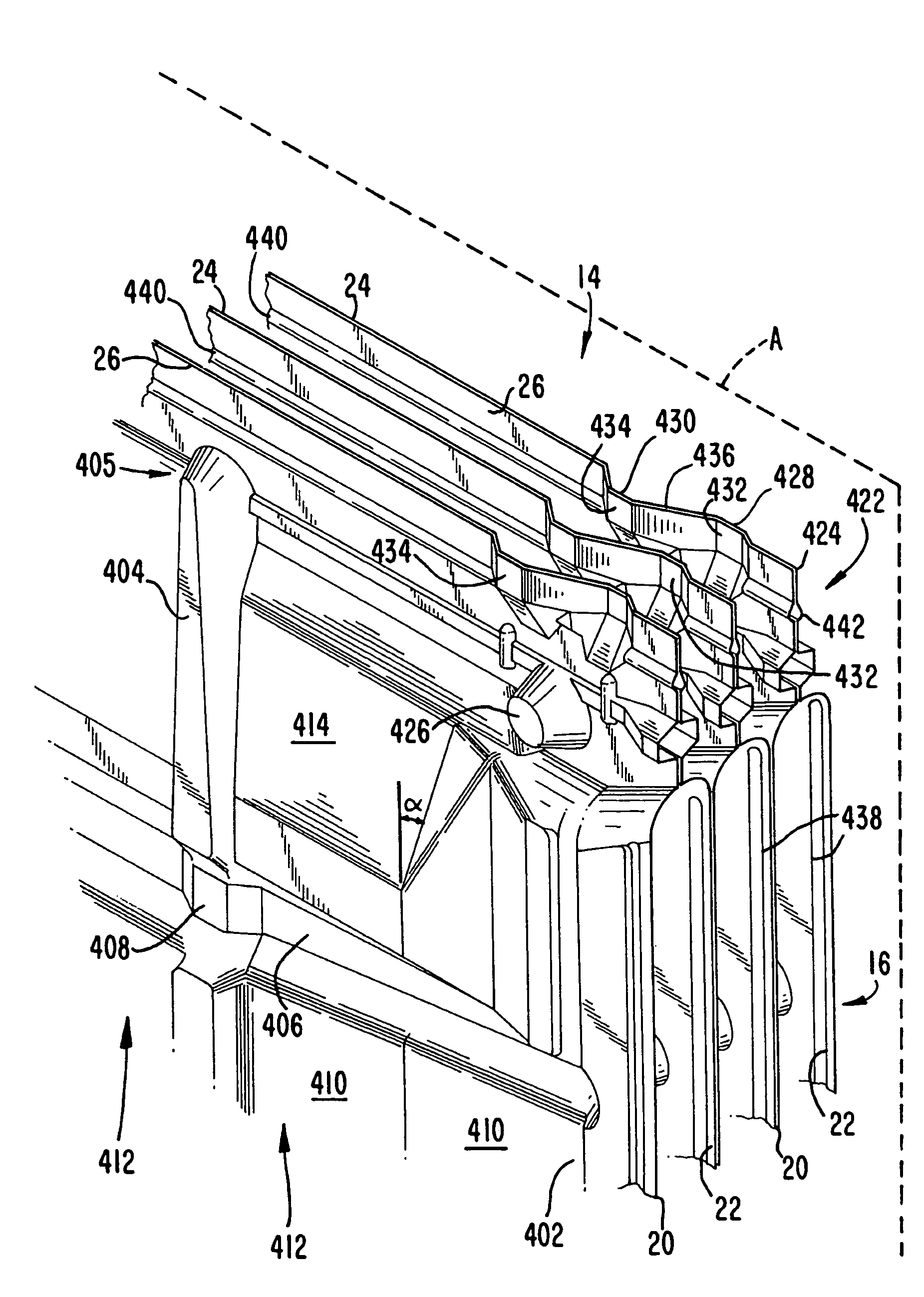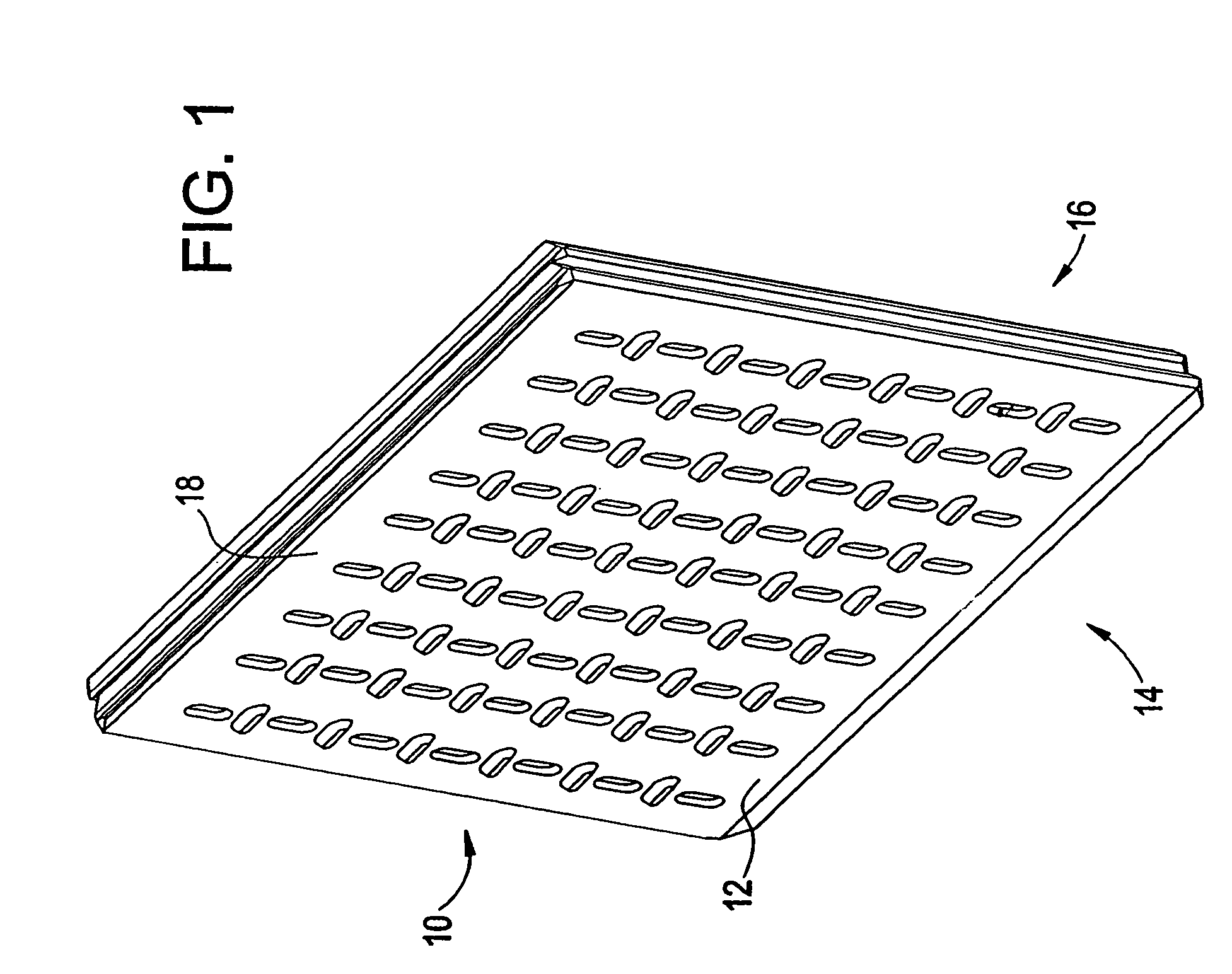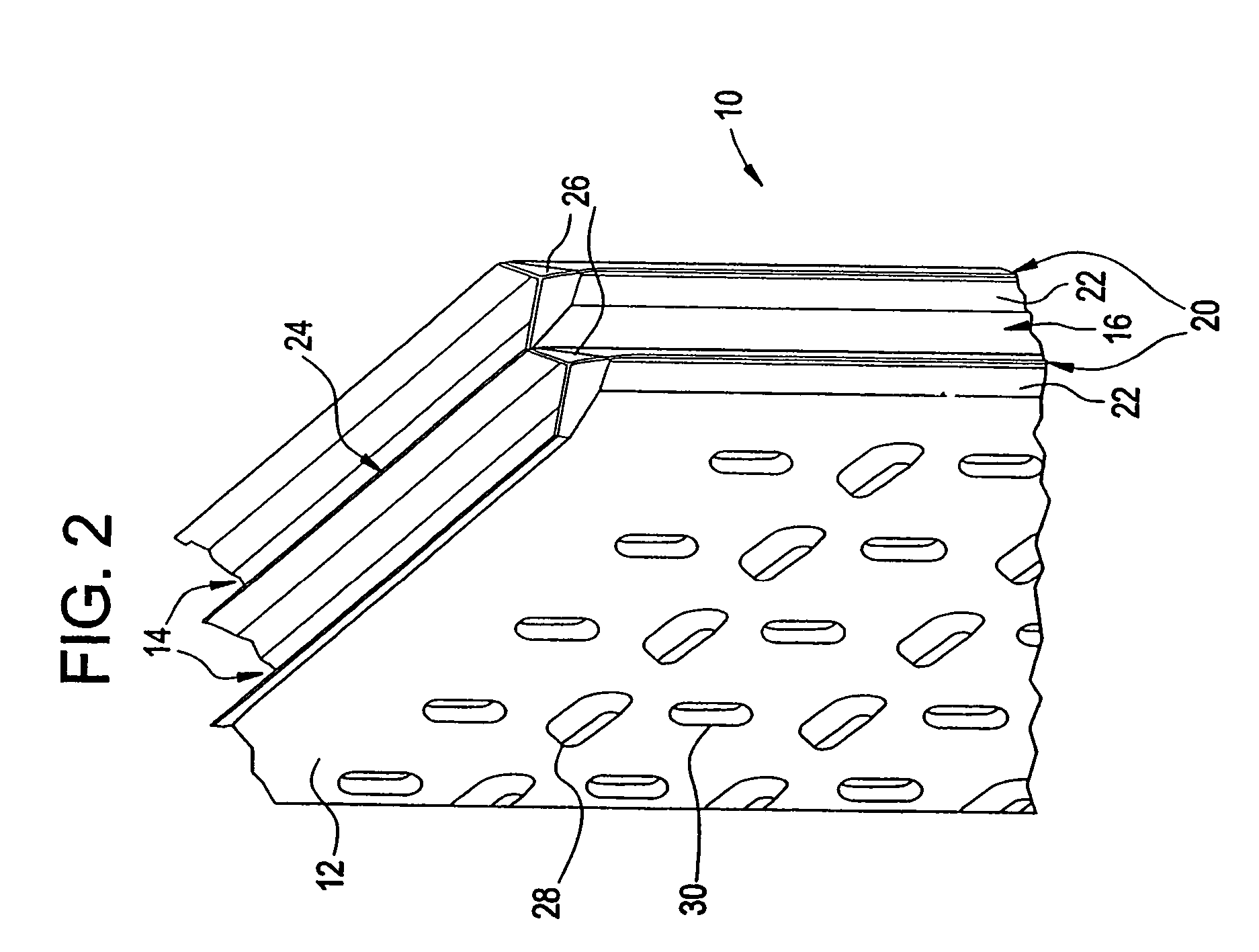Air-to-air atmospheric heat exchanger for condensing cooling tower effluent
a technology of air-to-air and cooling tower, which is applied in the direction of carburetizing air, lighting and heating apparatus, and separation processes, etc. it can solve the problems of low lying fog, and moisture in the plume to freeze, so as to reduce the heat content of the air stream
- Summary
- Abstract
- Description
- Claims
- Application Information
AI Technical Summary
Benefits of technology
Problems solved by technology
Method used
Image
Examples
Embodiment Construction
[0061]Heat Exchanger Pack
[0062]Referring now to the figures wherein like reference numerals indicate like elements, in FIG. 1 there is shown a vapor condensing heat exchanger pack 10. The heat exchanger pack 10 is constructed of thin sheets 12 that are bonded together to form a pack that has a first path 14 and a second path 16 for two different air streams. In a preferred embodiment, the two air streams enter the heat exchanger pack 10 at right angles to each other and are kept separate by the thin sheets 12.
[0063]The thin sheets 12 are a relatively thin synthetic resin material that are shaped to assist in condensing vapor from a heated water laden air stream passing through passageways 14 and transferring heat to a cool air stream passing through passageways 16. In a preferred embodiment, the material is 0.005 to 0.040 inches in thickness but is preferably 0.015 to 0.020 inches in thickness. The surface 18 may be textured to provide extended surface area presented to each of the ...
PUM
| Property | Measurement | Unit |
|---|---|---|
| angle | aaaaa | aaaaa |
| angle | aaaaa | aaaaa |
| angle | aaaaa | aaaaa |
Abstract
Description
Claims
Application Information
 Login to View More
Login to View More - R&D
- Intellectual Property
- Life Sciences
- Materials
- Tech Scout
- Unparalleled Data Quality
- Higher Quality Content
- 60% Fewer Hallucinations
Browse by: Latest US Patents, China's latest patents, Technical Efficacy Thesaurus, Application Domain, Technology Topic, Popular Technical Reports.
© 2025 PatSnap. All rights reserved.Legal|Privacy policy|Modern Slavery Act Transparency Statement|Sitemap|About US| Contact US: help@patsnap.com



